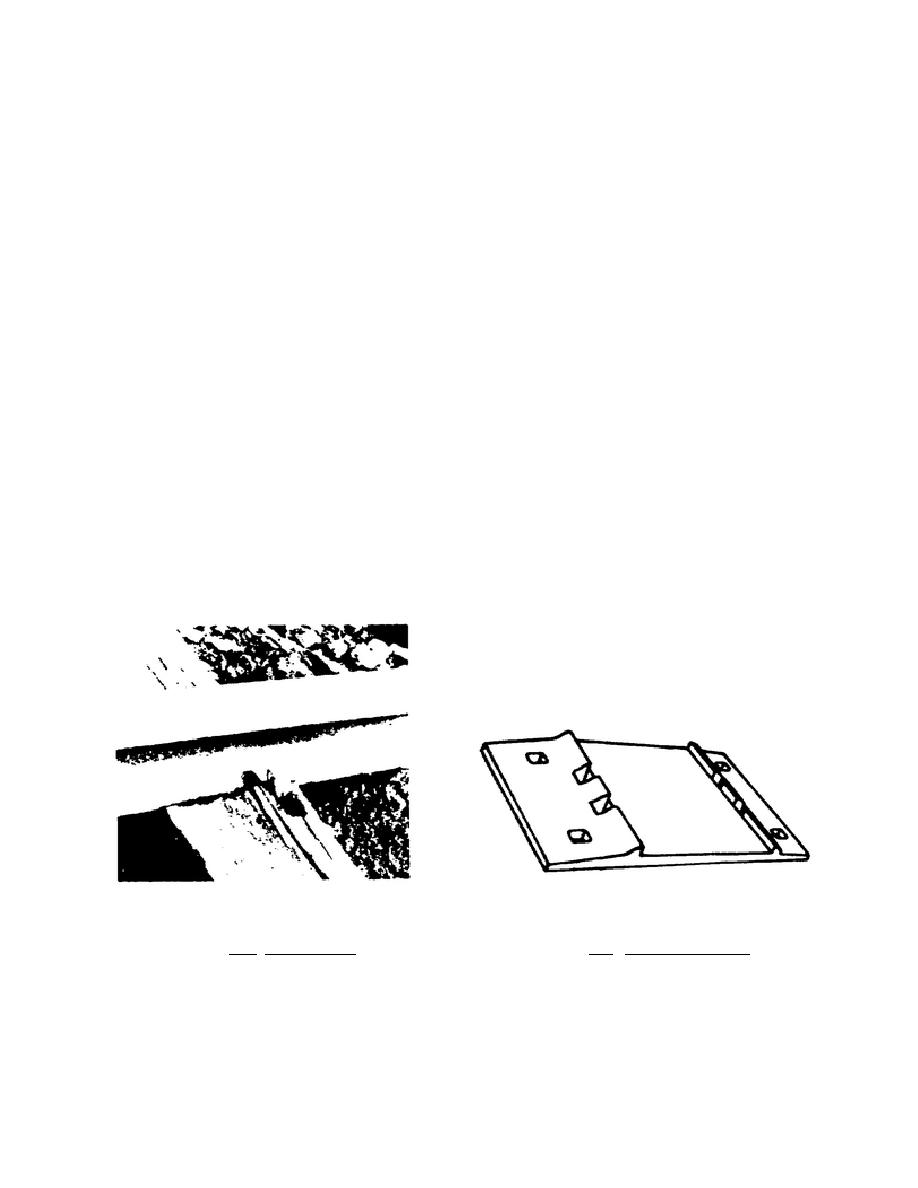
Section III. Track Fastenings
3.19. GENERAL
One writer on rail subjects speaks of "the tie that binds." But something must bind that
crosstie to the rail. Several fixtures called track fastenings unite rail and tie.
When treated ties are used, wood decay is practically non-existent and therefore is
seldom the reason for tie renewal. More often, mechanical wear is the cause, that brought on by
rails, spikes, and ballast under the impact of a moving train. Tie-protecting devices (tie armor)
have been developed to minimize tie damage. These devices are usually referred to as tie plates.
Other track fastenings--spikes, rail anchors, braces, and gage rods--make their contribution to
efficient track.
3.20. TIE PLATES
Tie plates serve as seats under the rail, between the rail and crossties. The plate spreads
train weight over a wider area of the tie than does the base of the rail and reduces tie wear
resulting from abrasion or crushing of the tie by the rail. Figure 3.7 shows the effects of wear on
a tie not protected by a tie plate.
Tie plates are made of steel. They have square holes punched in them to receive spikes
and have an indented, flat surface on the upper side to fit the base of the type of rail for which
they are designed to be used. Figure 3.8 shows the details of a typical tie plate. Tie plates are
seldom used on tangent track in a theater of
operations. Two per tie should be used if they are
available.
They are used on temporary
construction for turnouts,
Figure 3.7. Rail-Cut Tie.
Figure 3.8. Typical Tie Plate.
57



 Previous Page
Previous Page
